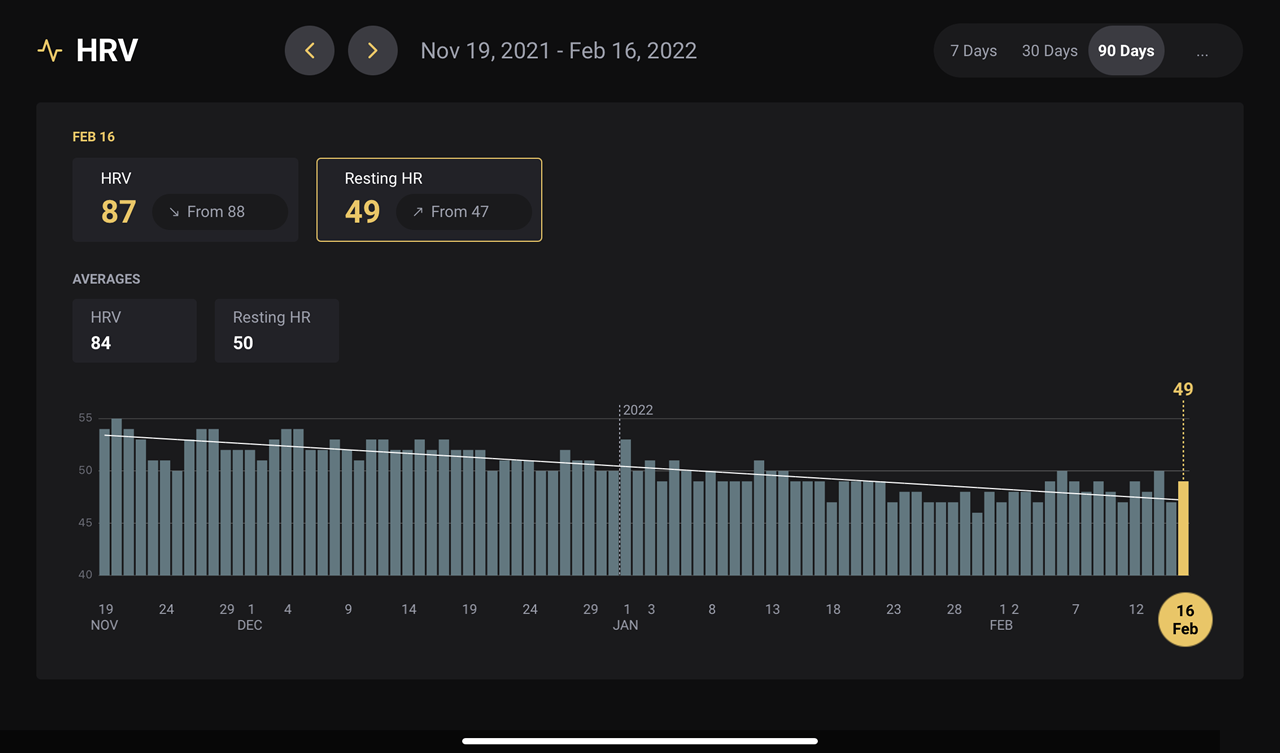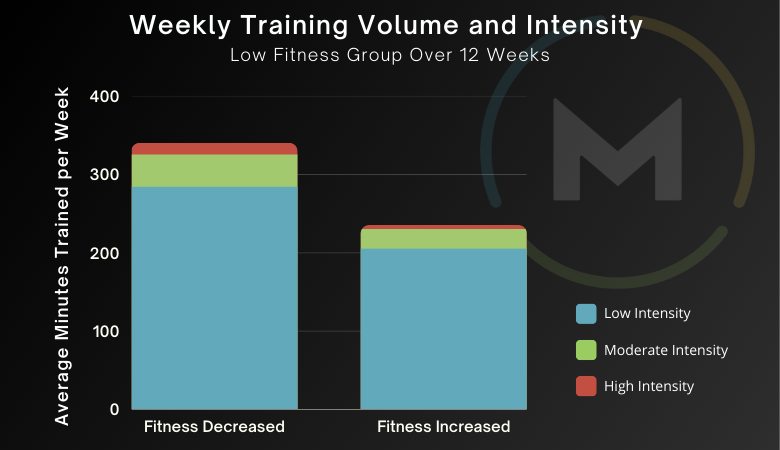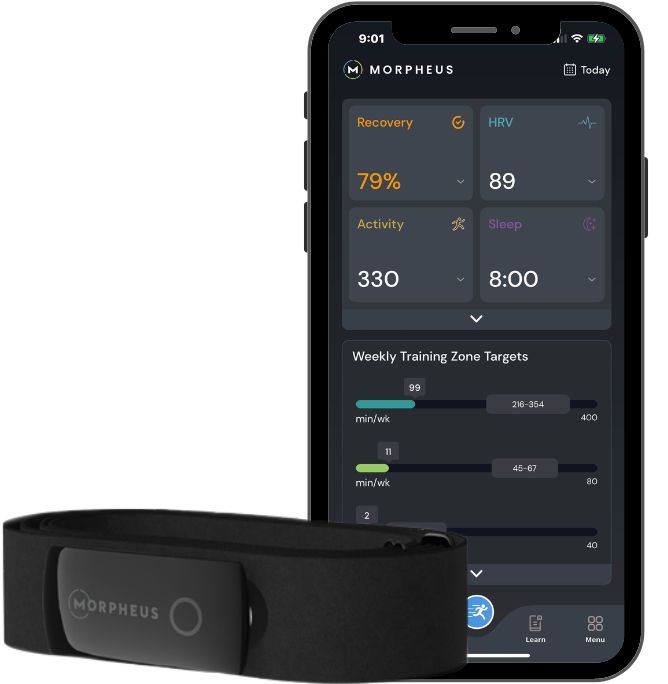
Ever since the first cavemen figured out they could get stronger by lifting rocks over and over again, people have been asking themselves the same two questions, “How much of this shit do I have to do?” and “How heavy does this rock (weight) need to be?”
And thus began the great debate around volume and intensity.
Thousands of years and research papers later, there is still no general consensus on the right answers to these hugely important questions.
One minute, all the “experts” are saying anything other than high-intensity training is a waste of time. The next minute, the same people are talking about the benefits of zone-2 cardio and why it’s so important for health and longevity.
Despite decades of research and debate within the fitness world, there’s really only two things that pretty much everyone agrees on A) working out is important and B) creatine works.
As a coach for more than 20 years, I’ve spent a lot of time thinking about the answers to these questions.
That’s because at the end of the day, every single training program really comes down to only three variables: how much training someone needs (volume), how hard it needs to be (intensity), and what movements (exercises) they should be doing
Get all of these right, and fitness improves.
Get even one of them wrong, however, and eventually you’ll either A) hit a plateau and get frustrated B) do too much and overtrain C) say screw it and stop working out.
In a nutshell, getting these three big pieces right is the game of fitness that everyone is trying to figure out how to win.
How modern technology and hundreds of hundreds of thousands of workouts can help solve age-old problems
As a coach, I can’t tell you exactly many people I’ve trained in the last 20+ years. It’s probably a few thousand or so, but who knows.
But what I can tell you is that writing programs, coaching people through workouts and competitions, and then seeing what happens to their fitness, health, and performance, over time has taught me a tremendous amount.
As humans, this is how we learn. We gain knowledge and expertise through time and experience.
While this is obviously effective, it’s also a slow and often challenging process.
This is especially true as a coach because all the things people do outside the gym in their daily lives – from sleeping, to eating, to dealing with mental stress – play a huge role in how much volume and intensity they need and thus their results.

It’s a lot harder to learn through experience when you’re only seeing one part of the fitness puzzle.
That’s why when I first launched my Morpheus system back in 2016, I designed it to track everything from training heart rates, to daily steps, to sleep, to resting heart rate, heart rate variability (HRV), recovery, and more.
I knew we could use wearable tech to get a much better understanding of the big picture of how our daily lives and training interact to shape our health, fitness, and performance.
Today, that’s exactly what we’ve done by digging into the Morpheus database of millions of workouts and billions of total data points and using modern technology like machine learning to help answer the age-old questions of, “How much training do I need to do?” and, “How hard does it need to be?”
What is a “user-day” and what does it really take for people to improve their fitness?
The power of having a ton of data and using computers to sort what it all means is that complex algorithms can find correlationships and patterns in data that as humans, we’d simply never be able to see.
With Morpheus, we started by defining a single person collecting data on sleep, training, activity, recovery, etc., as a single “user-day.” This is basically just one person living their life and recording their data in Morpheus.
On the training side, Morpheus tracks time in each of the three heart rate zones it’s built around as shown below from the Morpheus Coaching app.
Blue is low intensity, green is moderate, and red is high.

This is what allows us to understand volume (total training time), and intensity—the distribution of that time across the three zones.
To get the best data possible, we narrowed things down to users that had the most consistent data, including at least 3 workouts per week, across longer periods of time around 12 weeks.
This helped make sure we could get the most complete picture of how people’s metrics were changing over time.
This gave us a total of around 1,000,000 million user-days to analyze, which includes hundreds of thousands of workouts and tens of millions of total data points.
This is a ton of information.
It’s more or less the equivalent of training 1,000 people for 1,000 days and collecting information about everything they did along the way as their fitness changed.
But that brings me to the second part of this story, because to use this type of data effectively, we also had to define “fitness” in the first place.
Otherwise, how would we know if it was improving or not?
In this case, we looked at two key markers of what could be considered, “general fitness” and they were, average resting heart rate and average heart rate variability (HRV).
Why?
Because these are two very good indicators of overall aerobic fitness and resilience that correlate extremely well to a wide range of markers of health, performance, and even longevity.
As I’ve written about many times, building aerobic fitness isn’t the whole puzzle, but it is a huge piece of it across almost every goal outside of pure strength sports.
More and more research is coming out in support of this all the time and it’s so many people are now talking about the need for zone-2 cardio.
Using Morpheus, these are also relatively easy markers for people to track accurately on a daily basis, so this helps us see the changes and trends a lot more clearly than a direct measure where people have to do some fitness test.
With this definition of fitness in mind, we wanted to see if we could use the data to find patterns of volume and intensity in people that improved their fitness, i.e. saw their average HRV go up and their resting HR go down over a 12-week period, compared to people that saw the opposite.
In other words, we looked at people that saw their numbers improve over 12 weeks vs. people that didn’t to see if there were specific patterns in volume and intensity that would explain the difference in results.
You can see example below of what a decrease in average resting HR over 12 weeks looks like using our Morpheus Coaching app.

What you can learn from 1,000,000 user-days and what it means for your fitness
So what did using modern tech to analyze all this data tell us?
As you’ve probably guessed, the data showed that there are indeed very different amounts and patterns of volume and intensity in people that improve their average HRV and resting HR across 12-week periods compared to people that don’t.
When we drilled down and categorized people by their fitness levels, we could also see stark differences in the volumes and intensities needed for each category.
By itself, the fact that we found the differences isn’t exactly surprising.
It’s somewhat common sense that people that improve their fitness are probably doing something different than people that aren’t.
The real value and game-changing piece is in exactly what they are doing differently..
Using the data to see this is what finally gives us some real insight into answering questions like:
“Is it better to do less volume and more high intensity?”
“Or, do you need more volume and less intensity over time?”
“Or do people improve the fastest when they just do a lot of both?”
“How does someone’s fitness level relate to how much volume and intensity they need to keep improving it?
While the data showed some answers that were to be expected, people with higher fitness levels to start with need more to improve, for example, it also revealed a lot of things that most people would probably find counterintuitive.
Looking at people with low fitness to start with, for example, the group that improved trained significantly less than the group that saw their fitness decline over 12 weeks.
They also spent far less time at the highest intensities in the Morpheus red zone, as you can see from the graph taken from the data below.

This data reinforces that more is not always better, and can actually be worse, especially when your fitness is low.
Putting the pieces together and getting in the zone with the new Morpheus weekly training targets
Most wearables and apps these days are generally pretty good at telling you what you’ve already done.
How many steps you’ve taken, how many hours you slept last night, how many calories you burned in a workout, etc.
But what most of them aren’t very good at, however, is telling you things you don’t already know.
If you don’t move very much throughout the day, you already know you need to move more. If you’re not getting enough sleep, it’s not rocket science to tell you that you need to change that.
Morpheus has always taken things a step further with metrics like HRV and recovery to help provide greater insights into things that may not be as clear, but what’s been missing, until now, is an easy and effective way to turn that knowledge into smarter training and better fitness.
This new feature takes all the insights we pulled from 1,000,000 user-days and turns them into a powerful tool that finally answers the age-old questions of, “How much of this do I need to do?” and, “How hard does it need to be?”
How does it do that?
Each week, Morpheus will use your fitness level, your goals (to improve or maintain your HRV and resting HR), recovery, and your previous workout data to set a target range of how many minutes you need to hit in each of the three Morpheus heart rate zones, which represent low, moderate, and high intensities.
You can see exactly how this will look and work in the screenshot below.

As your fitness improves, Morpheus will automatically adjust your weekly zone targets to keep pushing you forward. This is the key to progression and seeing improvements week after week.
The good news is that if you’re already a Morpheus user, you’ll automatically get the update as soon as we release it in the app store and you’ll receive an email as soon as that happens.
If you’re not already using Morpheus, click here to learn how to get started
I’m also working on some new free courses coming soon on how to build workouts and progressions using the Zone-Based Interval Training (ZBIT) feature built into the app to hit your weekly targets.
If you’re going through my Metamorphosis conditioning program, all the workouts are already built out for you, so all you have to do is adjust your weekly volumes to dial them in.
This is a huge step forward in using real data science to make training smarter and more effective. We’ve analyzed millions of data points and hundreds or thousands of workouts to make sure that each one of yours is making you better.
The new Morpheus update is now live and on the app store.
If your goal is to improve your aerobic fitness and overall conditioning, this is the way.


Great stuff. Something that would add a lot of value to the Morpheus app would be if it could it integrate with the HRV measurements on the Apple Watch (or other wearables). Would be easier than having to do the Morpheus HRV test every morning
Alexander,
Unfortunately, HRV is not a standardized metric like so many others are, so it’s difficult to integrate with other systems. Morpheus and some other systems, for example, use RMSSD to calculate HRV. Apple, on the other hand, uses SDNN.
They are very different HRV calculations and lead to completely different numbers that cannot be compared to one another.
There are several steps involved in calculating HRV and many different calculations and ways of filtering the data. It’s just not practical or integrate with other systems that aren’t calculating HRV in the same way.
That said, we are exploring a potential integrate with the Apple Watch, though the HRV side would be different for people that used that for HRV than the Morpheus devices.